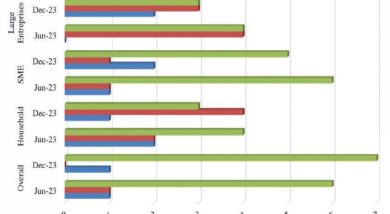Liquidity challenges push up interbank rates
Interbank rates have risen by 11 percentage points from three percent in mid-April last year to 14 percent, a sign of banks’ desperation to meet liquidity requirements, Reserve Bank of Malawi’s (RBM) daily financial market reports indicate.
Interbank lending occurs when banks extend loans to one another to meet liquidity requirements to manage any potential bank runs by clients.

The reduction in liquidity may lead to an increase in commercial bank interest rates as already evidenced by most commercial banks which have slightly increased their base lending rates to 13.3 percent from 13.2 percent in April.
RBM spokesperson Mbane Ngwira in an interview yesterday said the central bank may look in a possibility of extending more funds to the banking sector.
He said: “We deliberately took some measures including slash Liquidity Reserve Requirement [LRR] and Lombard Rate to ease liquidity pressures on banks thus making more funds available to the banks because we foresaw the current scenario.
“We are monitoring the situation and will act accordingly to protect the banks.”
In response to market developments in view of coronavirus (Covid-19) disease, RBM Governor Dalitso Kabambe announced some measures during he second Monetary Policy Committee Meeting to incentivise banks some of which pushed LRR—percentage of total deposits that commercial banks are mandated to hold as deposits with the central bank— downwards by 125 basis points to 3.75 percent.
This reduction immediately released about K12 billion into the banking system as additional funds available to commercial banks to directly support distressed borrowers.
Further, the RBM also cut the Lombard Rate—the rate at which commercial banks borrow from the central bank— by 50 percent to 0.2 percentage points above the Policy Rate, effectively reducing the cost of funds for commercial banks.
But the central bank’s reports indicate that excess reserves as at May 6 were recorded at K-2.77 billion.
Market and investment analyst Armstrong Kamphoni in an interview observed that the development means the kwacha liquidity is tight and, therefore, the cost of money is high.




